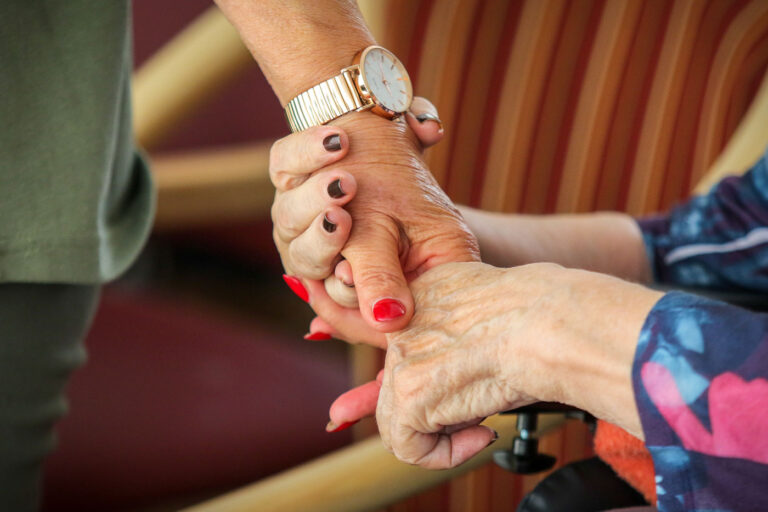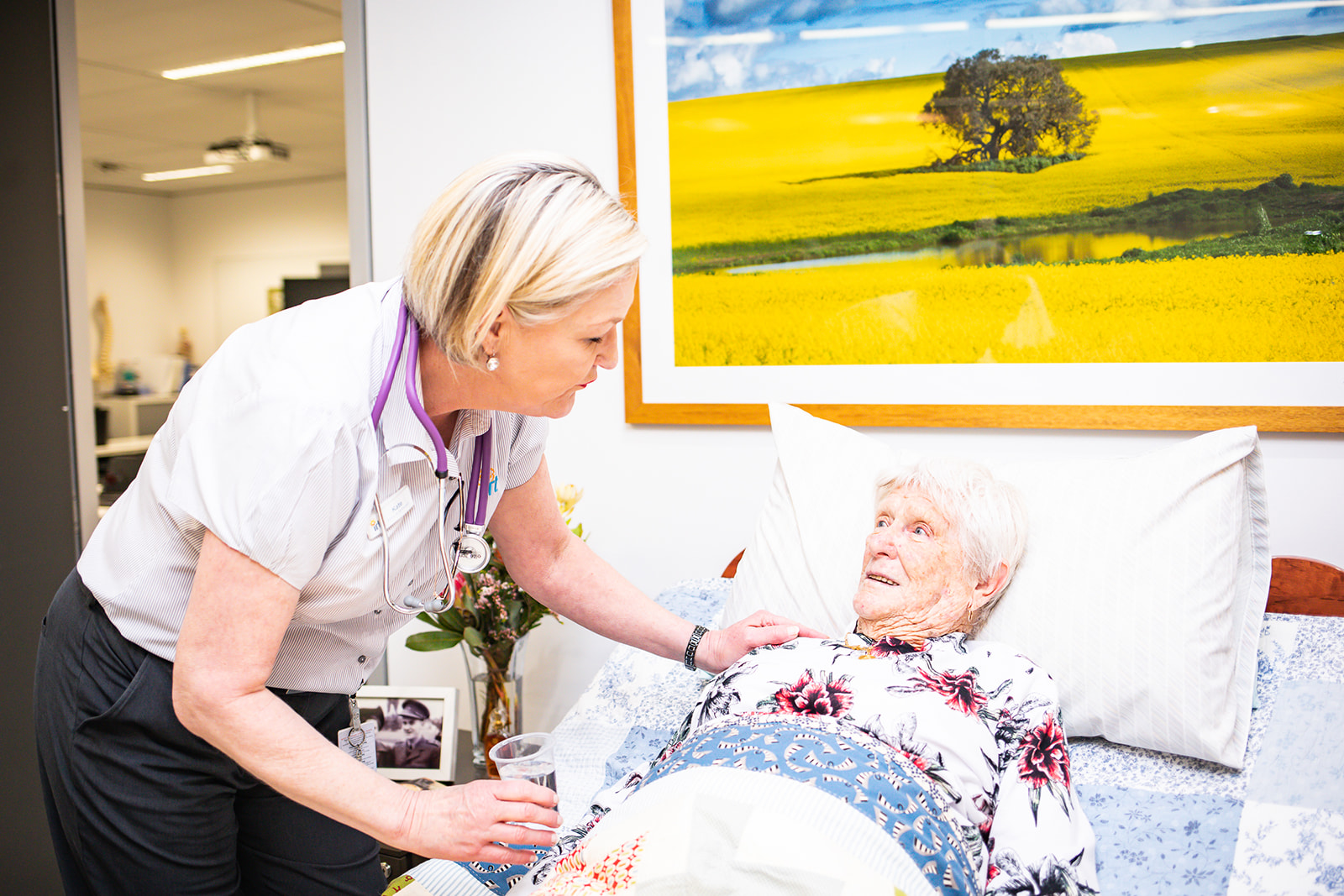Different types of arthritis: a guide
In this helpful guide, we look at the most common forms of arthritis, their symptoms and the differences between the types.

Arthritis is often seen as wear and tear that happens as we get older but for some it might come as a surprise to learn it is not a single disease, but an umbrella term for more than 100 conditions that affect the joints and surrounding structures in our body.
While it’s usually associated with older people, arthritis can affect people of any age and is one of the most common medical conditions in Australia. Almost four million adults, including 6000 children, are affected by arthritis every year.
Specific conditions will affect people in different ways, but all types of arthritis share common symptoms of: joint pain, joint swelling and stiffness, inflammation and a decreased range of motion.
Symptoms may come and go and can be mild, moderate, or severe. Some people may find their symptoms stay the same for years, but for some they can progress or get worse over time. Severe arthritis can cause chronic pain and stiffness making it difficult to complete daily tasks.
Here’s our guide to some of the most common forms of arthritis and the differences between them.
1. Osteoarthritis
Osteoarthritis, also referred to as degenerative arthritis, is the most common form of joint disease. More than 2.1 million Australians experience this type of arthritis which affects the whole joint structure. Osteoarthritis causes cartilage, the flexible connective tissue found on the ends of bones in a joint, to break down.
Once the cartilage has worn down, there is nothing left to protect the joint which eventually causes bones to rub together. This friction creates pain and inflammation, and can cause stiffness due to the loss of cartilage.
2. Rheumatoid arthritis
Arthritis Australia describes rheumatoid arthritis as a type of autoimmune disease in which your body attacks the healthy connective tissues in your joints. In this form of arthritis, your immune system starts by targeting the lining of the joints called the synovium, which causes pain and swelling. This inflammation can result in joint deformity and bone erosion.
The condition can also impact a wider variety of body systems in some people. Rheumatoid arthritis can damage the skin, eyes, lungs, heart, and blood vessels depending on the severity of the disease.
3. Gout
Gout is another one of the very common types of arthritis. This complex condition can affect anyone and is caused by the accumulation of urate crystals inside the joints and is another type of rheumatic disease. It's extremely painful and happens when there's a build-up, overflow or inability to process uric acid.
Gout attacks can happen suddenly, sometimes overnight, resulting in severe pain, swelling, redness, and tenderness in a joint. Many may have heard that it typically affects the big toe, and it often does, but it can also affect other joints and can also affect the kidneys. Symptoms can last for one to two weeks after developing rapidly.
4. Ankylosing spondylitis
Ankylosing spondylitis is an inflammatory disease that affects the joints and ligaments of the spine. Over time, this condition can cause some of the vertebrae in your spine to fuse which makes the spine less flexible, resulting in a hunched posture. If the ribs are also affected, it can become hard to take deep breaths.
Other joints like the hips and shoulders, and areas of the body such as the eyes, skin, and bowel can also be affected. Symptoms of ankylosing spondylitis usually start to appear in early adulthood, sometimes as early as 15.

5. Juvenile idiopathic arthritis
Juvenile idiopathic arthritis is the name used to describe a number of arthritis types that are found in children under 16. This autoimmune disorder affects around 6,000 Australian children annually, causing persistent joint pain, swelling, and stiffness. Some children might only have symptoms for a couple of months, while others are affected for several years.
Some serious complications can occur due to juvenile idiopathic arthritis, including growth problems, joint damage, inflammation or the eyes and sometimes other organs.
‘Idiopathic’ is a term used to describe diseases that have no known or identifiable cause. Researchers aren’t sure why children develop this form of arthritis, but believe it may be the result of a virus, bacteria, or other external factors that activate certain genes. However, there is no current evidence that foods, toxins, allergies, or lack of vitamins cause this disease.
6. Reactive arthritis
Reactive arthritis refers to any joint pain and swelling that’s been triggered by an infection elsewhere in the body. The infection is usually found in the intestines, genitals, or urinary tract. The knees, ankles, and feet are the joints most commonly affected by this form of arthritis.
The inflammation can also cause issues with skin, eyes, and urethra. Most people’s symptoms will come and go, but typically disappear within 12 months.
7. Psoriatic arthritis
Psoriatic arthritis is a chronic, autoimmune form of arthritis that causes joint inflammation and occurs with the skin condition psoriasis. Approximately one third of people with psoriasis develop this type of arthritis.
The body's immune system attacks itself, primarily the joints and skin, but also organs. Fingers and toes may swell, and nails might become pitted or separate from the nail bed.
Symptoms may be mild or severe, affect just a few or many joints, and symptoms can come and go. A sudden onset of symptoms is called a flare.

Prevention
Unfortunately, arthritis isn’t always preventable. There are some causes of arthritis that can’t be controlled, such as family history, age, or gender.
However, there are some healthy habits you can adopt to reduce the risk factors you can control.
1. Protect your joints
Avoid sitting in awkward positions or putting too much pressure on your joints to keep them healthy later in life.
2. Eat healthily
Eating a well-balanced diet can help you maintain a healthy weight, which reduces the stress on your joints.
3. Exercise regularly
Regular, appropriate exercise is one of the most effective ways to treat arthritis.
4. Quit smoking
Smoking can put a lot of stress on the immune system which can lead to inflammation and damage to the connective tissues.
The most important step to take is to tell your doctor what symptoms you’re experiencing. You may be referred to a rheumatologist or an orthopaedist for testing and treatment, as these are doctors who specialise in arthritis and related conditions.
Arthritis is a progressive disorder, so make sure you have regular check-ups with your doctor to monitor your condition and ask for professional advice on preserving your mobility. The longer you wait to seek treatment, the more damage the arthritis will cause.
Treatment
Arthritis treatment mainly focuses on reducing your pain, improving joint function, and preventing further damage to your joints. The best treatment will depend on the type and location of your arthritis, as well as the symptoms you have.
You may need to try several treatment options to learn what works best for you.
There are different medications available depending on the type of arthritis you have. Your doctor can prescribe the best medication for your case.
Some types of arthritis respond well to physical therapy. A physiotherapist or your doctor can help you create an exercise plan suited to your condition. Exercises to improve range of motion and strengthen the muscles surrounding joints are typical activities you can expect.
If ongoing treatments aren’t helping as much as expected, your doctor may suggest surgery for:
- Joint repair
- Joint replacement
- Joint fusion
Arthritis is a recognised disability in Australia. If you work and have arthritis, there are many services designed to help you. You may be able to access extra support in the workplace, such as changing your work schedule or modifying equipment needed to complete your job.
There are also products available that can help you protect your joints during daily tasks like getting in and out of chairs or preparing food. Modifying your home with smart devices, or even just changing the way you approach tasks, can help prevent repetitive movements that can exacerbate your arthritis symptoms.
Although there’s no cure for arthritis, following the advice of your doctor and making a few lifestyle changes can greatly reduce your symptoms and help you manage your arthritis more effectively.
Check out our handy article on foods that help fight arthritis inflammation

Want to keep doing the things
you love?
Find out more about IRT Home Care and how we can assist you or your loved one to keep living independently at home. IRT has been providing home care services for more than 30 years, offering support to seniors in NSW, Qld and the ACT.
Find out moreYou may also like
Palliative care vs end of life care: what's the difference?
What is palliative care? People think palliative care is the end of someone’s life, but there’s so much more to it.
Exercising and osteoarthritis: everything you need to know
Regular exercise is an important way to help manage osteoarthritis and to keep yourself fit.


